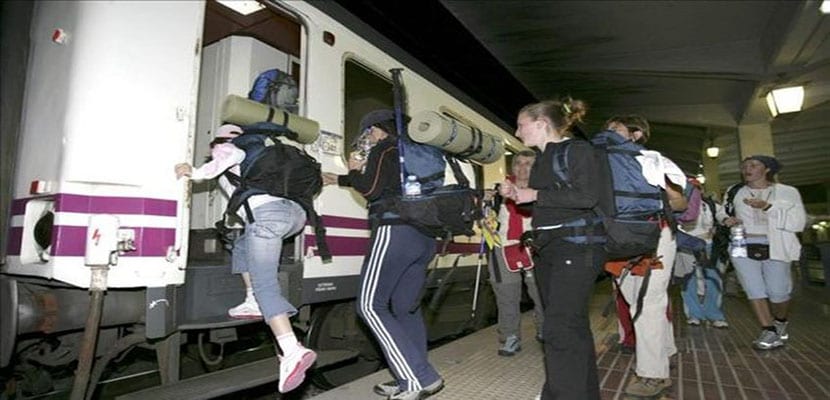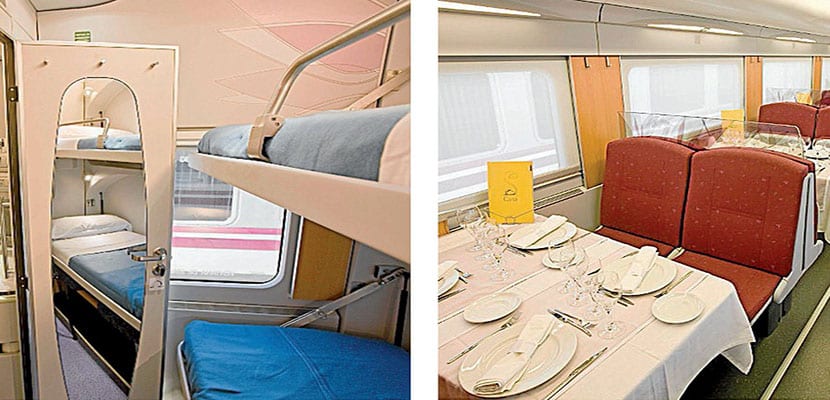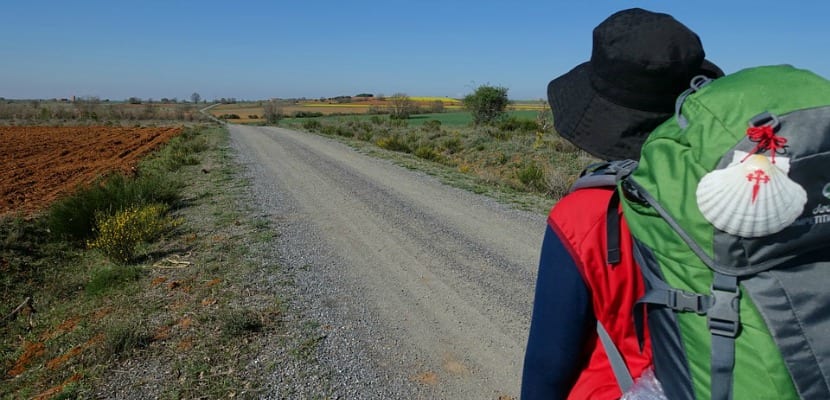
Image | Training
Since ancient times, pilgrimage to holy places has been common to many religions. These itineraries had a spiritual sense and an approach to divinity. In the case of Christianity, the great pilgrimage centers are Rome (Italy), Jerusalem (Israel) and Santiago de Compostela (Spain).
Either because of a promise, because of faith or because of a challenge set to overcome alone or in company, every year thousands of people undertake a long journey on foot to Santiago de Compostela, where the Apostle Santiago is buried.
Renfe has launched, for the third year, the Pilgrim's Train for all those who wish to do the Camino de Santiago in a different way. Specifically, the route of the Portuguese way, which joins the train route for the first time.
What is the Pilgrim's Train?
It is a hotel on rails that covers the route Madrid - Vigo - Pontevedra - Vilagarcía de Arousa - Santiago de Compostela - Madrid, passing through places such as Tui, O Porriño, Mos, Redondela, Arcade, San Amaro, Villagarcía de Arousa, Cambados, O Grove, Caldas de Rei, Valga, Padrón or Teo.
The departures are only made during the month of August on the 3rd, 10th, 17th and 24th (four days and five nights) and, for a few days, Renfe has already put the tickets on sale. These can be purchased from 625 euros per person in a double compartment and include accommodation in a Grand Class double cabin (with full bathroom), continental breakfast every morning, excursions, the activities carried out and two dinners (the first and the last night of the travel).
Characteristics of the Pilgrim's Train

Image | The Galician Post
The Pilgrim's Train is a Series 7 Talgo Hotel Train. The sleeping cabins are modern and have an area of 4,5 m2 that can accommodate two two 200 × 80 cm folding berths. They have latex mattresses, armchairs for the day position, luggage compartment spaces, folding tables, plugs, hangers, a 15 TFT screen, audio channels, automatic alarm clock and an intercom to communicate with the train staff.
Likewise, it also has a cafeteria car, two restaurant cars and a lounge car dedicated to leisure. All these wagons have a modern and practical style.
News in the Pilgrim Train 2017

Image of the exterior of the Cathedral of Santiago de Compostela
The great novelty of this season is that the travelers of this tourist train will be able to obtain the Compostela at the end of their trip (a document that certifies that the minimum required distance of the Camino de Santiago has been traveled and that it is collected at the Pilgrim's Office next to Praterías square, a few meters from the Cathedral).
This is possible thanks to the fact that travelers are given the possibility of traveling several stages on foot that together will exceed the minimum required (100 kilometers on foot) to obtain this certificate. You can also do the stages by bicycle, which are allowed to be transported on board.
These can be achieved in the three stages contemplated in the train program. The organization points out that: "From the station where the train has stopped to the place where the stage begins, it is planned to transfer passengers by bus, which will accompany the journey for any necessary journeys." Travelers who prefer it have optional free visits to the different towns along the route.
What is the Camino de Santiago?

According to oral tradition, Santiago (one of the apostles of Christ) landed in Roman Baetica to preach in this territory. After a long journey through the Iberian Peninsula, he returned to Jerusalem and in 44 he was executed. His disciples collected his body and shipped it in the direction of Roman Hispania. The ship reached the Galician sea coast and the body was transferred to be buried in the place where the Compostela cathedral is located today.
It was in the XNUMXth century when the discovery of the tomb of Santiago Apóstol in Santiago de Compostela was disclosed in the West. Since then, the flow of pilgrims has never stopped, although the pilgrimage route has experienced periods of greater and less splendor.
For centuries many monasteries and churches were erected along the way and people from all corners of Europe came to Santiago de Compostela to see the tomb of the Holy Apostle. The heyday of the Camino de Santiago continued until the XNUMXth century (when the Protestant Reformation and the wars of religion caused the number of pilgrims to decline) and hit rock bottom in the XNUMXth century. However, at the end of the XNUMXth century it entered a decisive phase of recovery thanks to the impulse of different civil and religious entities. Thus, several routes were created that from all over Spain converged in Galicia.